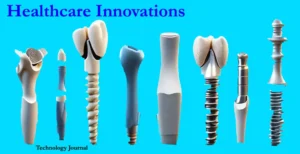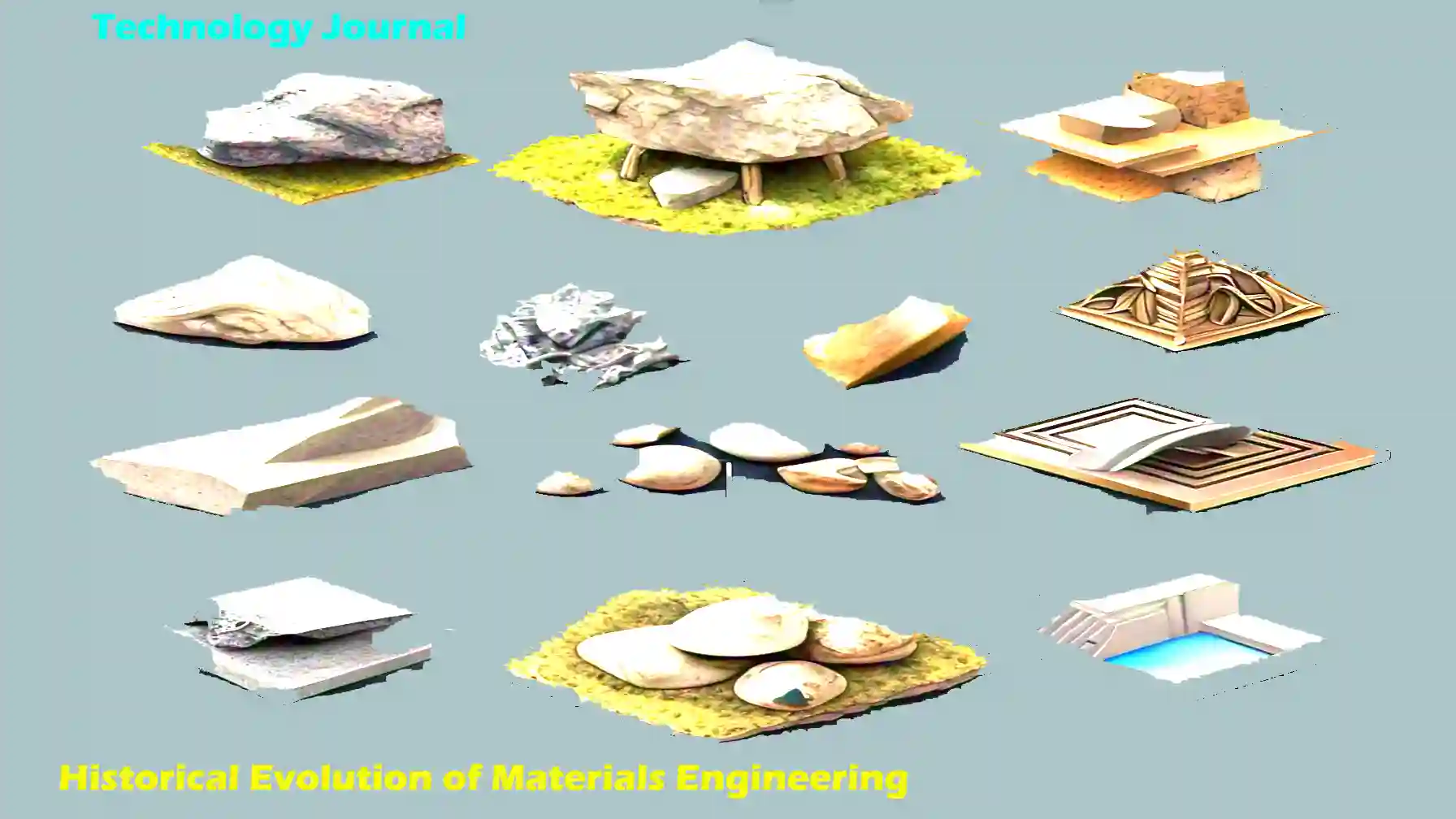Historical Evolution of Materials Engineering:
The field of Materials Engineering and Technology has ancient roots. Early humans used natural materials such as stone, wood, and animal bones. They crafted tools, weapons, and shelters from these materials. The Stone Age, Bronze Age, and Iron Age were pivotal in human history. These periods were marked by advancements in material manipulation and use. The discovery of metals like copper, bronze, and iron enabled societies to create more complex tools. This progress led to significant societal advancements.
Also Read: The Benefits of Using Object Oriented Programming in Your Projects
The Industrial Revolution in the 18th and 19th centuries was a turning point for Materials Engineering and Technology. The invention of processes like the Bessemer process for steel production allowed for the mass production of steel, which became a cornerstone of industrial growth. This era saw the rise of railroads, skyscrapers, and bridges, all made possible by advancements in materials technology. In the 20th century, the development of new materials such as plastics, ceramics, and composite materials revolutionized industries ranging from manufacturing to aerospace. Today, the field continues to evolve with cutting-edge developments in nanotechnology, biomaterials, and smart materials, opening new possibilities for innovation.
Key Concepts in Materials Engineering
At the heart of Materials Engineering and Technology are several fundamental concepts that guide the understanding and application of materials in various industries. These concepts form the foundation of the field, enabling engineers to select and manipulate materials for specific applications.
-
Material Properties: The properties of materials, such as strength, ductility, hardness, and corrosion resistance, are crucial for determining their suitability for different applications. For example, in the construction industry, materials need to have high compressive strength to support heavy loads.
- Material Structure: The arrangement of atoms and molecules within a material greatly influences its properties. By understanding the structure-property relationship, engineers can tailor materials to meet specific requirements. This concept is particularly important in the development of high-performance materials like aerospace composites.
-
Material Processing: The methods used to shape and treat materials play a significant role in determining their final properties. Processes such as casting, forging, extrusion, and heat treatment can enhance or modify the properties of materials, making them more suitable for their intended applications.
-
Material Characterization: The ability to analyze and measure the properties of materials is essential for quality control and research. Techniques such as microscopy, spectroscopy, and mechanical testing are used to characterize materials and ensure they meet the desired specifications.
-
Material Design: The design and creation of new materials with specific properties is a key focus in Materials Engineering and Technology. Engineers combine different materials or modify existing ones to create innovative solutions for challenges in industries such as healthcare, energy, and electronics.
Applications of Materials Engineering and Technology:
The versatility of Materials Engineering and Technology is evident in its wide range of applications across multiple industries. From aerospace to construction, materials engineers are at the forefront of innovation, creating materials that improve performance, efficiency, and sustainability.
Aerospace Industry
In the aerospace industry, materials engineers are tasked with developing materials that are lightweight yet strong enough to withstand extreme conditions. Aluminum alloys, titanium alloys, and composite materials are commonly used in aircraft and spacecraft construction due to their excellent strength-to-weight ratios. These materials help reduce fuel consumption, increase payload capacity, and enhance overall performance. For instance, carbon fiber composites have become indispensable in modern aerospace design, offering superior strength and reduced weight compared to traditional materials.
Automotive Industry
The automotive industry is constantly evolving, with a strong focus on improving fuel efficiency, safety, and performance. Materials such as high-strength steel and aluminum alloys are widely used to reduce the weight of vehicles, thereby improving fuel economy. Advanced materials like carbon fiber and magnesium alloys are also being explored for their potential to further enhance vehicle performance. Additionally, materials engineering plays a crucial role in the development of electric vehicles, with engineers working on new battery materials that offer higher energy densities and faster charging capabilities.

Electronics Industry
The electronics industry relies heavily on materials engineering to develop components such as semiconductors, insulators, and conductors. As the demand for smaller, faster, and more energy-efficient devices grows, materials engineers are at the forefront of developing new materials that can meet these requirements. Silicon, the primary material used in semiconductors, has been the foundation of the electronics industry for decades. However, recent advancements in materials like graphene and gallium nitride are paving the way for next-generation electronic devices that are faster, more efficient, and more durable.
Energy Industry
As the world transitions to renewable energy sources, Materials Engineering and Technology is playing a crucial role in the development of materials for solar panels, wind turbines, and energy storage systems. Engineers are working to create materials that can withstand harsh environmental conditions while maintaining high efficiency. In the field of energy storage, the development of advanced battery materials is key to improving the performance and longevity of energy storage systems. Materials such as lithium-ion batteries and solid-state batteries are being refined to increase energy density, reduce charging times, and extend the lifespan of energy storage devices.
Healthcare Industry
The healthcare industry has seen significant advancements in medical devices, implants, and drug delivery systems thanks to Materials Engineering and Technology. Biocompatible materials, such as titanium and ceramics, are used in medical implants to ensure compatibility with the human body. These materials are crucial for the development of artificial joints, dental implants, and other medical devices that improve patient outcomes. Additionally, materials engineering is driving innovation in tissue engineering and regenerative medicine, where engineers are developing materials that can support the growth and repair of biological tissues.
Construction Industry
In the construction industry, materials engineers are focused on creating stronger, more durable, and more sustainable building materials. Innovations in concrete, steel, and insulation materials have led to energy-efficient buildings. These buildings can withstand extreme environmental conditions. One significant advancement is self-healing concrete. This type of concrete can repair cracks over time. Such innovations showcase how Materials Engineering and Technology are revolutionizing the construction industry.
Challenges in Materials Engineering and Technology:
Despite the numerous advancements in Materials Engineering and Technology, several challenges remain. These challenges drive research and innovation, pushing the boundaries of what is possible.
- Sustainability: One of the biggest challenges facing the field is the need for sustainable materials that minimize environmental impact. Researchers are exploring the use of renewable resources, recyclable materials, and biodegradable materials to address this issue. The development of sustainable materials is particularly important in industries like construction and packaging, where traditional materials often have significant environmental footprints.
- Complexity of Modern Materials: As materials become more complex, predicting their behavior and properties becomes increasingly difficult. Advanced computational modeling and simulation techniques are being used to address this challenge, allowing engineers to predict how materials will perform in real-world applications before they are produced.
-
Cost: The cost of developing and producing new materials can be prohibitive, particularly for industries that require large quantities of material. Reducing the cost of materials without compromising their performance is a critical area of research in Materials Engineering and Technology.
Innovative Trends in Materials Engineering and Technology:
Nanomaterials
Nanomaterials, which are materials engineered at the nanoscale, are one of the most exciting areas of research in Materials Engineering and Technology. These materials exhibit unique properties that make them suitable for a wide range of applications, from medicine to electronics. For example, nanomaterials can be used to create drug delivery systems that target specific cells in the body, improving the efficacy of treatments while minimizing side effects.
Smart Materials
Smart materials are materials that can change their properties in response to external stimuli, such as temperature, pressure, or electrical fields. These materials are being used in a variety of applications, from self-healing materials in construction to shape-memory alloys in medical devices. The ability of smart materials to adapt to changing conditions makes them particularly valuable in industries that require high levels of precision and performance.
3D Printing
3D printing, also known as additive manufacturing, has revolutionized Materials Engineering and Technology by allowing engineers to create complex structures using a wide variety of materials. From metals to biocompatible polymers, 3D printing enables the rapid prototyping and production of materials that would be difficult or impossible to manufacture using traditional methods. This technology has applications in industries ranging from aerospace to healthcare, where custom materials and components are often required.
Biomaterials
The development of biomaterials, which are materials designed to interact with biological systems, is driving innovation in healthcare and medicine. Biomaterials are used in a wide range of applications, including medical implants, tissue engineering, and drug delivery systems. The ability to engineer materials that can mimic the properties of natural tissues is opening up new possibilities for regenerative medicine and personalized healthcare.
Real-World Impact of Materials Engineering and Technology:
The impact of Materials Engineering and Technology can be seen across numerous industries and real-world applications. In the aerospace industry, the use of carbon fiber composites has significantly improved fuel efficiency by reducing the weight of aircraft. In healthcare, biocompatible materials have revolutionized medical implants, leading to faster recovery times and improved patient outcomes. The electronics industry has seen tremendous advancements thanks to new materials like graphene, which is paving the way for faster and more efficient electronic devices.
Future Outlook for Materials Engineering and Technology:
As we look to the future, Materials Engineering and Technology will remain crucial in addressing major global challenges. These challenges include climate change, resource scarcity, and the need for sustainable energy. Advanced technologies like artificial intelligence (AI) and machine learning will revolutionize materials research. Quantum computing will further accelerate the discovery of new materials with enhanced properties. The focus on sustainability will also drive innovation. Researchers will develop materials that minimize environmental impact while ensuring high performance levels.
Also Read: Green Computing: Navigating a Sustainable Digital Frontier
Conclusion
Materials Engineering and Technology is a vital discipline that continues to shape the world around us. It influences everything from the earliest tools used by humans to the advanced materials powering today’s industries. This field has been a driving force behind technological progress throughout history. As we advance further into the 21st century, materials engineers will encounter new challenges and opportunities. Despite these challenges, their work will remain at the forefront of innovation. Materials engineers will continue to develop groundbreaking materials for aerospace, healthcare, and renewable energy. Their efforts will be crucial in building a future that is sustainable, efficient, and technologically advanced.








